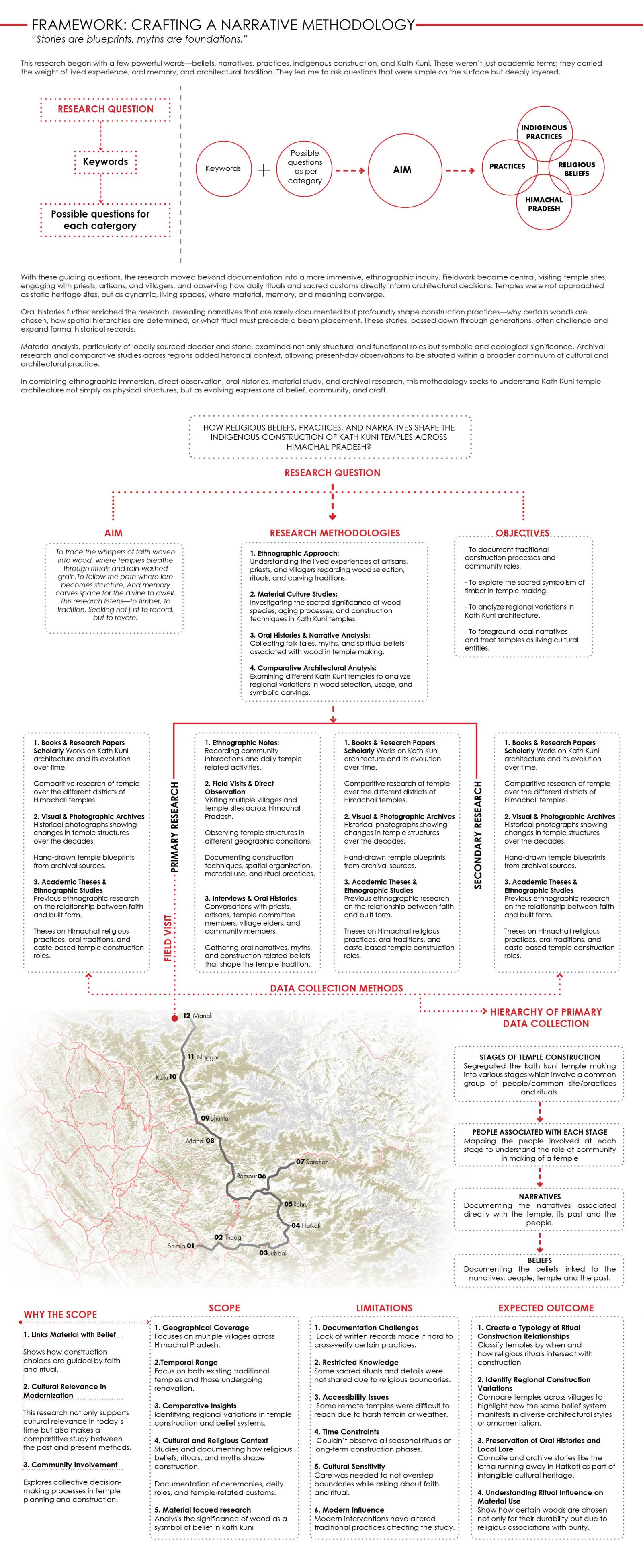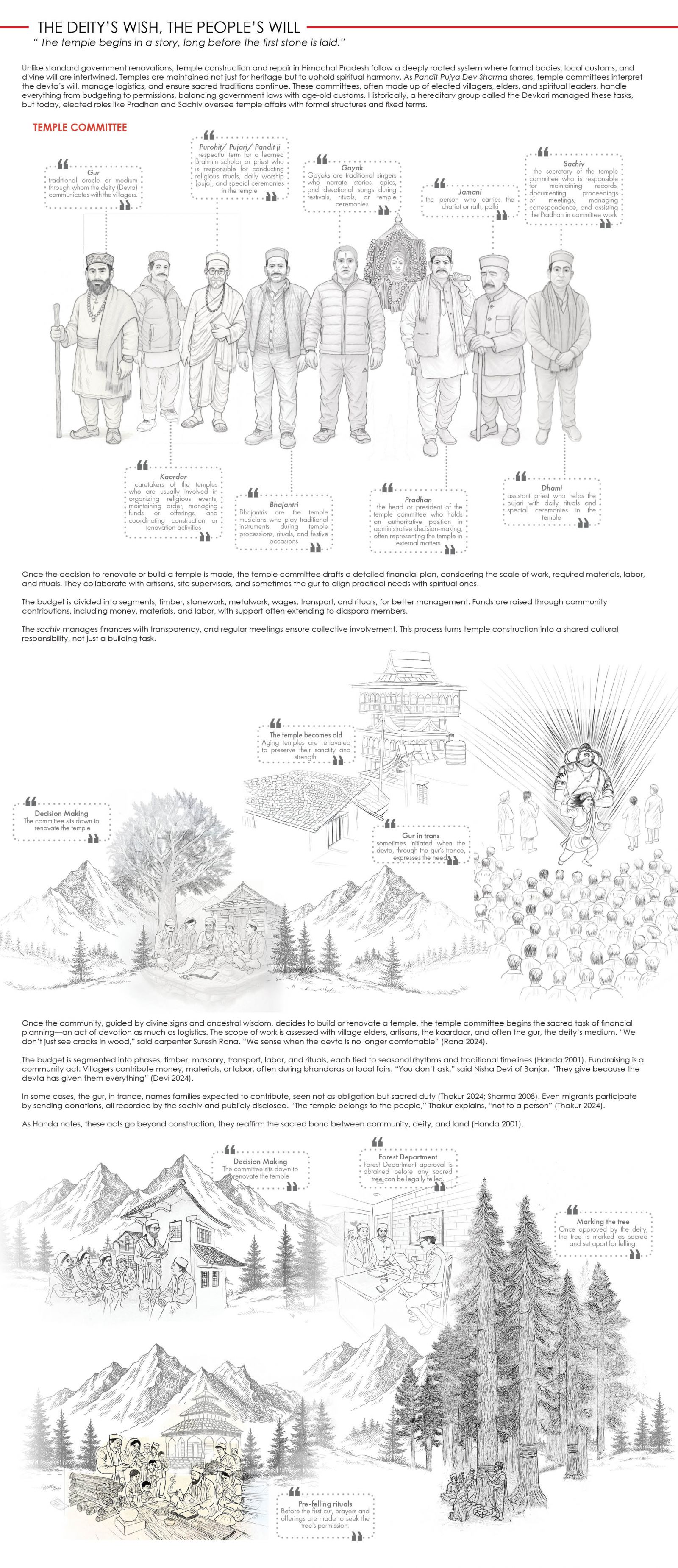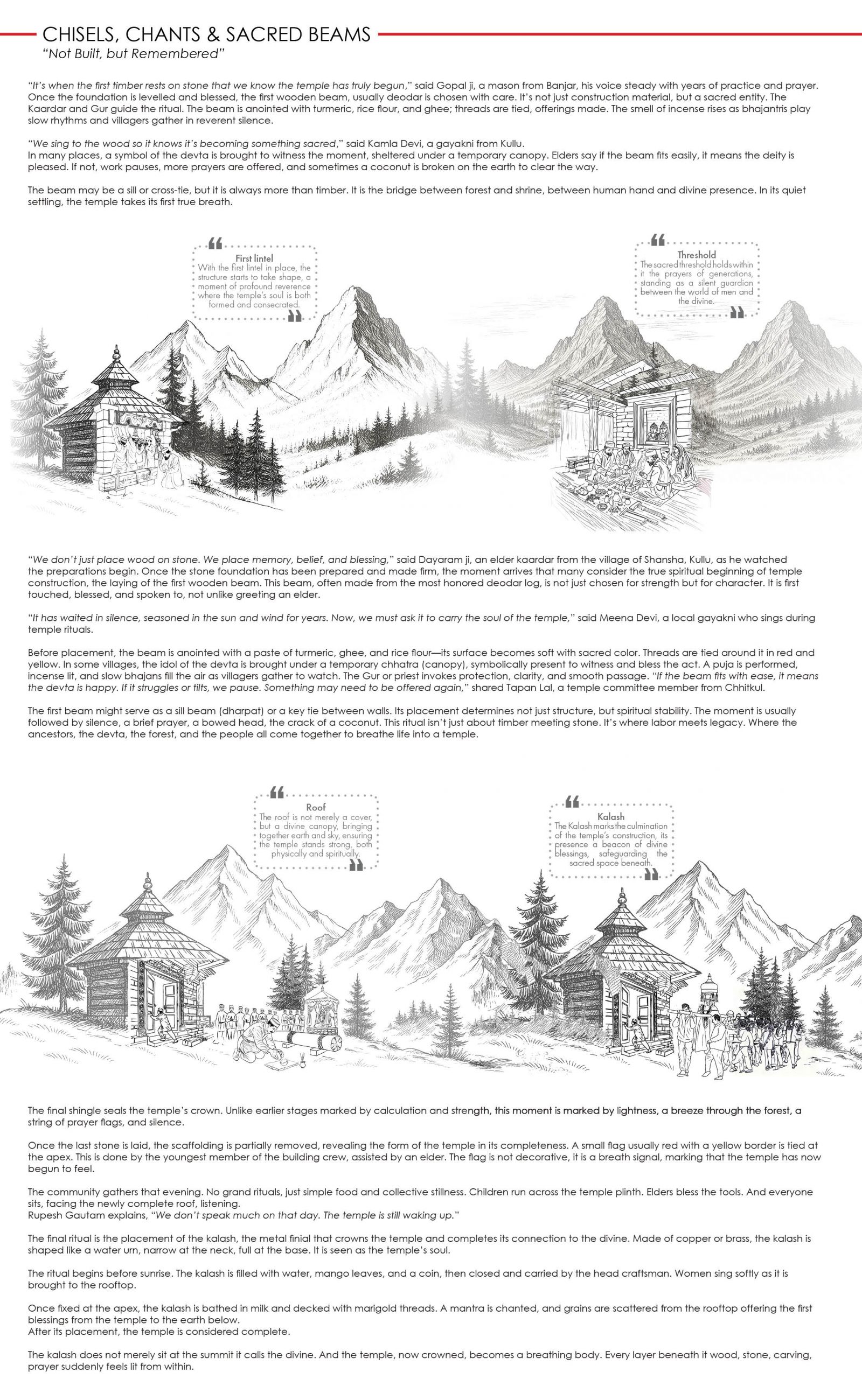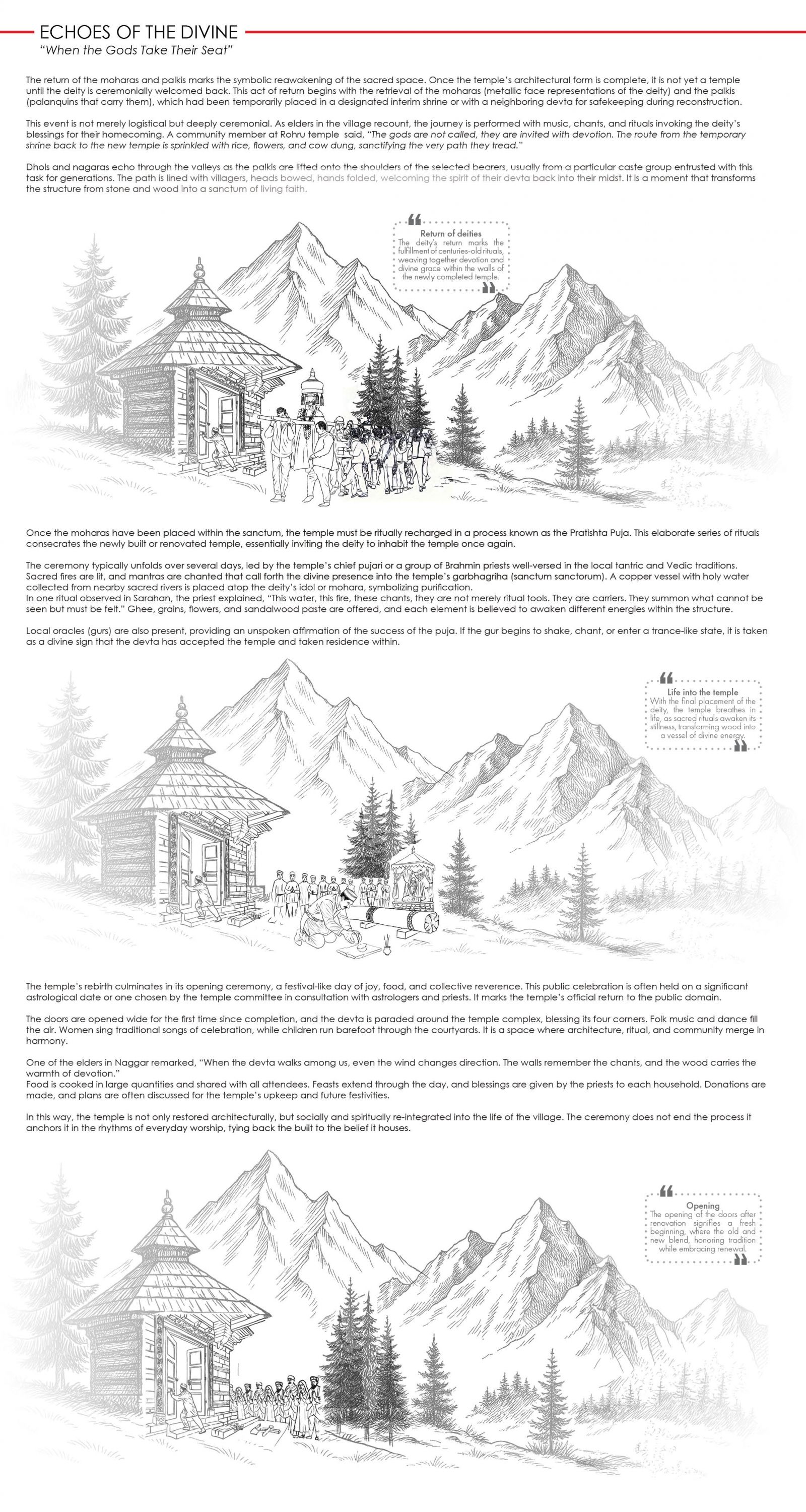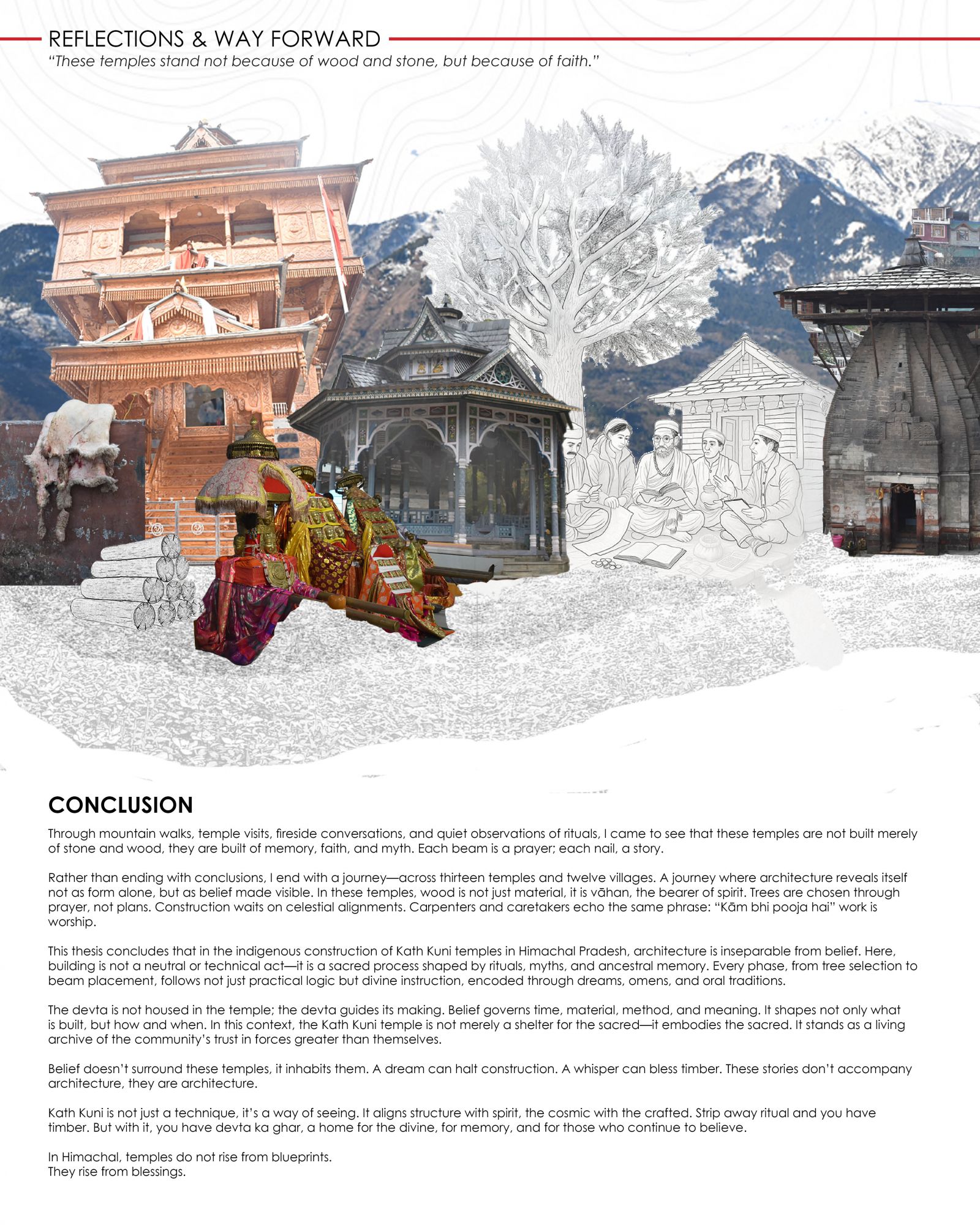Your browser is out-of-date!
For a richer surfing experience on our website, please update your browser. Update my browser now!
For a richer surfing experience on our website, please update your browser. Update my browser now!
This research traces the quiet yet powerful presence of belief in the making of Kath Kuni temples in Himachal Pradesh. These temples are not just architectural forms, they are stories carved in wood, shaped by the hands of artisans, guided by the voices of oracles, and held together by centuries of ritual and faith. Through village visits, conversations with priests, gurs (oracles), craftsmen, and elders, and the close observation of sacred practices, this study explores how religion, oral tradition, and material knowledge come together to build a temple long before a single stone or log is laid. It focuses on how the selection, treatment, and use of wood are governed by sacred customs, where the axe meets the tree only after ritual approval, and each wooden member carries symbolic weight. From tree-felling ceremonies to the consecration of carved beams, this research documents the lived, spiritual, and technical processes behind traditional Kath Kuni temple-making. Using an ethnographic approach, combined with architectural and comparative analysis, it brings forth the layered relationship between belief and building practice. Ultimately, this study preserves not just a method of construction, but a way of seeing, where architecture is born not only from materials, but from memory, myth, and devotion.
View Additional Work
